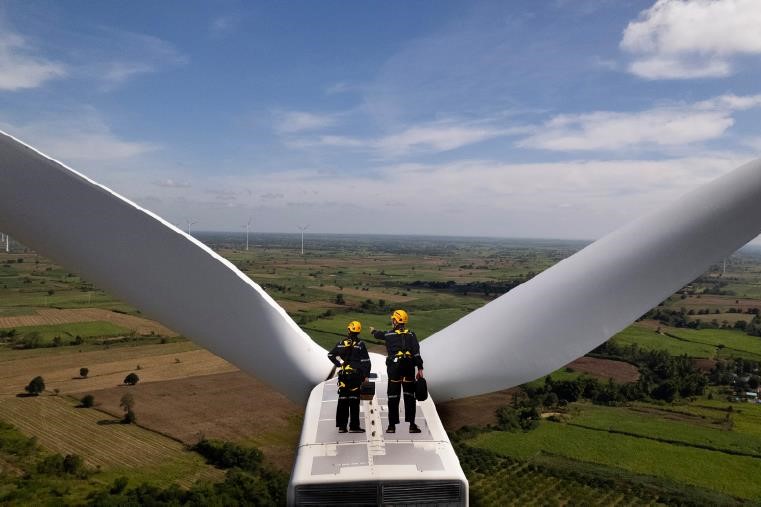Bond funds, another way to tackle the climate transition
We are currently in an environment that is favourable to the bond market, which has once again become attractive following a spike in yields. Meanwhile, the environment and the climate in particular, have over the years become major concerns expressed by our clients. The climate transition is most often addressed through equity strategies, but can also be tackled through bond funds, with a company being looked at as a whole, through both its shares and its bond debt.
Publié le 10 October 2023

How have you adjusted to your clients’ needs on these environmental issues?
Our investment philosophy has evolved considerably in bonds, from a strategy in which solvency criteria were the only ones we looked at when selecting issuers to a strategy in which it has become essential to assess ESG criteria, environmental ones, in particular. Moreover, a few years ago, analysts focused on governance criteria; in reaction to the Covid crisis, they turned their attention to the social pillar; and over the past few months, they have done the same with the climate as an issue. This in-depth shift in our management philosophy reflects the broad transformation of our environment in which actors must change to address investors’ new concerns. As far back as 2018, CPRAM launched an international
equity fund in the climate thematic, in partnership with CDP1. On the bond front, we have capitalised on this capability and adapted it to our asset class. In 2021, we launched our Climate Bonds fund and we have just created a target-date fund on this same thematic.
What is your approach to climate issues?
We take a straightforward approach. The idea is to finance the energy transition by refinancing only those companies that are most committed to this transition, while refraining from financing those who don’t play along. We have taken on the resolute stance that the climate transition is everyone’s business. Accordingly, we have adopted an all-sector approach, as all companies’ efforts matter, particularly those companies in high-climate-impact sectors (HICS2), which we regard as key to the climate transition. For, while HICS account for 33% of exposure to the credit market, they also represent 86% of its total carbon intensity!
Our approach is quite different from a 100% green bond strategy. While sustainable bonds are important in steering towards a low-carbon economy by financing green projects (renewable energies, for example), they are naturally concentrated in certain sectors whereas we invest in all sectors in order to promote a global transition. Accordingly, we use these vehicles in our strategies but without relying
them at any cost. We cannot do without analysing the related projects to ensure their credibility but, above all, to review the overall strategy of the issuing company.
Simply put, what do you look at in selecting bond issuers?
On the extra-financial front and backed by the resources of Amundi, our parent company, our approach excludes companies’ bad practices. We analyse the overall average ESG note but also underlying criteria that could reveal information that is primordial in identifying “weak signals”. We also see whether the company is subject to serious controversies. In the climate component, we first select issuers that have the best environmental practices, choosing only those that are the highest rated by CDP1. We then
chose companies that have set a trajectory for reducing their carbon emissions, based on Science Based Targets data, and that have committed themselves to sticking to that trajectory. Throughout the lives of our strategies, we then monitor the portfolio’s emissions-reduction trajectory, both holding by holding, i.e., at the issuer level, and at the portfolio level to ensure that we meet the reduction target
that we have set for ourselves.
What challenges are you facing in the coming months?
As a bond manager, we have an important role to play in assisting companies in their transformation and in financing those that play along and commit themselves. This role is even more crucial as it coincides with positive feedback from our clients for the bond asset class. We will therefore continue to develop our thematic bond strategies by addressing two broad investor challenges: the quest for yield and useful refinancing in response to the major climate and environmental challenges.
1. CDP: an NGO that gathers data on the environmental impact of companies, cities and national governments and rates them accordingly in the world’s largest environmental database. The CDP publishes its methodologies on its website to provide full transparency and assist in understanding: https://www.cdp.net/fr
2. HICS (High climate impact sectors): The EU Benchmark Regulation on low carbon emissions (EU BMR) defines high climate impact sectors as those that are essential to the transition to a low-carbon-emission economy. There are nine of these: A. Agriculture, forestry, and fishing; B. Mining and quarries; C. Manufacturing; D. Electricity generation, natural gas, steam and air-conditioning; E. Water supply, water treatment, waste management and treatment; F. Construction G. Wholesaling and retailing, auto and motorcycle repair; H. Transport and storage; and L. Real estate